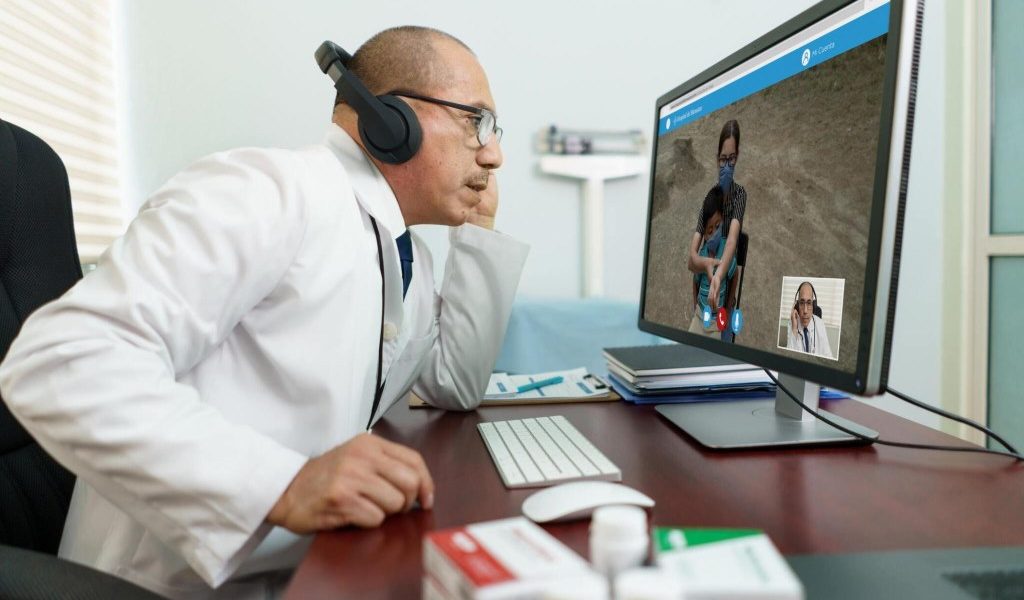Living with long-term pain can have an impact, on every aspect of one’s life affecting activities and overall well-being. However, a comprehensive pain management program offers hope and a pathway to regain a fulfilling and healthier lifestyle.
In this guide, we explore how a designed pain management program can bring about changes empowering individuals to regain control and improve their quality of life.
Understanding the Effects of Chronic Pain on Lifestyle
Chronic pain goes beyond being an ailment, it has wide-ranging effects on different aspects of an individual’s lifestyle. If you are looking for an online pain management program, you can contact a reputable medical institute.
1. Physical Limitations and Decreased Mobility
One immediate consequence of pain is the imposition of limitations. It can make everyday tasks challenging and reduce mobility. This often leads to a lifestyle that further worsens health issues and perpetuates the cycle of pain.
2. Emotional and Psychological Impact
Chronic pain takes its toll on well-being contributing to conditions, like anxiety and depression. The emotional impact can result in withdrawal, strained relationships, and an overall diminished sense of well-being. The psychological burden associated with pain tends to affect every facet of life.
3. Sleep Pattern Disruption
Chronic pain often disrupts sleep patterns leading to fatigue and worsening the emotional toll. Lack of sleep further impairs the body’s ability to heal creating a relationship, between pain and sleep disturbances.
4. Impact on Work and Productivity
Individuals dealing with pain often struggle to maintain productivity and focus at work. This condition can result in increased absenteeism decreased work efficiency and even job loss. The economic consequences add a layer of stress.

The Role of a Comprehensive Pain Management Program
An effective pain management program addresses the multifaceted nature of pain aiming not to alleviate physical symptoms but also improve overall quality of life.
1. Holistic Assessment of Pain
Embarking on the journey towards transforming one’s lifestyle begins with an assessment of pain. Pain management professionals conduct evaluations to understand the causes, triggers, and how pain affects various aspects of an individual’s life. This thorough assessment lays the groundwork for interventions.
2. Tailored Treatment Plans
Recognizing that each experiences pain differently personalized treatment plans are essential. A comprehensive pain management program tailors its interventions to meet the needs and objectives of each person. These plans may encompass a combination of physical, psychological, and lifestyle interventions.
3. An approach involving a team of experts
Given that pain is a condition pain management programs often employ a multidisciplinary approach. This means healthcare professionals, from fields, such as doctors, physical therapists, psychologists, and nutritionists collaborate.
Key components of the pain management program
A designed pain management program incorporates elements that work synergistically to bring about positive changes in an individual’s life.
1. Education and understanding of pain
Equipping individuals with knowledge about their pain condition is an aspect of any effective pain management program. Education helps individuals grasp the mechanisms behind their pain understand the role of the system and identify how various factors contribute to their situation.
2. Pain relief through medication management
Managing medications plays a vital role in relieving pain effectively. Pain management experts may prescribe medications to help alleviate pain reduce inflammation and enhance comfort. The objective is not simply to mask symptoms. To establish a foundation for other interventions that lead to long-term relief.
3. Physical Therapy and Rehabilitation
Physical therapy plays a role in pain management programs. Through exercises stretching routines and rehabilitative measures, it aims to enhance mobility strengthen muscles, and address limitations. With progress as its focus physical therapy enables individuals to regain functionality and carry out activities with greater ease.
4. Cognitive Behavioral Therapy (CBT) for Pain
Addressing the emotional aspects of pain is vital for relief. Cognitive Behavioral therapy (CBT) for pain concentrates on transforming thought patterns developing effective coping strategies and fostering emotional resilience. This psychological intervention contributes to improved well-being. Brings about positive changes in overall lifestyle.
5. Lifestyle Ergonomics
A pain management program often includes guidance, on modifying lifestyle choices and making adjustments. Professionals collaborate with individuals to identify and modify factors that may contribute to their discomfort. This could involve optimizing workstations improving sleep habits or incorporating practices into routines.
6. The Integration of Mindfulness and Stress Reduction
In a pain management program, it is crucial to incorporate mindfulness practices and stress reduction techniques. Mindfulness-based interventions, such, as meditation and deep breathing exercises play a role in helping individuals effectively handle stress promote relaxation, and enhance their mental well-being.

Transformations in Physical Well-Being
A successful pain management program leads to transformations in well being empowering individuals to regain control over their bodies.
1. Improved Mobility and Functionality
Physical therapy and targeted exercises have an impact on improving mobility and functionality. Individuals experience comfort and ease while performing activities as they gradually restore their physical capabilities. This process fosters feelings of independence and empowerment.
2. Enhanced Sleep Quality
By addressing pain issues and following sleep hygiene recommendations individuals can achieve sleep quality. Better sleep not only contributes to well-being but also supports the body’s natural healing processes. As a result of sleep individuals often notice increased energy levels and improved cognitive function.
3. Reduction in Pain Severity
The primary objective of a pain management program is to reduce the severity of pain experienced by individuals. By combining treatments, like medications, physical therapy, and psychological interventions individuals often witness a decline in the intensity and frequency of their pain.
4. Emotional Well-Being and Lifestyle Transformation
When someone undertakes a pain management program to transform their lifestyle it goes beyond making physical changes. It also encompasses improving well-being and overall quality of life.
5. Psychological Resilience and Coping Skills
Behavioral therapy equips individuals with coping skills and enhances their psychological resilience. Acquiring coping mechanisms enables them to navigate challenges with a positive mindset thereby reducing the emotional burden of chronic pain.
6. Restoration of Emotional Balance
As the severity of pain diminishes and coping skills improve individuals often experience a restoration of balance. The toll that chronic pain takes on emotions lessens leading to a positive emotional state. This transformation positively influences relationships, social interactions, and overall satisfaction with life.
7. Reengagement in Social and Recreational Activities
Chronic pain results in withdrawal and reduced participation in recreational activities. A successful pain management program facilitates an individual’s return to engaging well and participating in activities they once enjoyed. Reconnecting with these aspects of life contributes to a balanced lifestyle.
8. Maintaining Productivity
For those individuals whose chronic pain has affected their ability to work enrolling in a pain management program can facilitate their return to the workforce. Enhance productivity. This not only helps restore stability but also instills a sense of purpose and achievement.
Sustaining Support and Ongoing Maintenance
While a pain management program can bring about changes it is crucial to have continued support and maintenance for long-term improvements.
1. Progress Monitoring
Regular follow-up appointments with pain management professionals allow for monitoring of progress. Making necessary adjustments in treatment plans. These appointments provide individuals with the opportunity to address any emerging challenges and receive guidance on maintaining their improved lifestyle.
2. Incorporating Self-Care Practices
Encouraging individuals to integrate self-care practices into their routines is an aspect of sustained support. This may involve continuing with exercises, mindfulness practices, and adopting lifestyle habits. These practices empower individuals to actively contribute to their well-being.
3. Establishing a Support Network
Establishing a support network is crucial for long-term success in managing pain. This could involve reaching out to support groups sharing experiences with others who are facing challenges and building relationships, with friends and family who understand and provide encouragement.

Conclusion
A designed pain management program holds the potential to not change only how people experience pain but also how they live their lives. By addressing all aspects of pain and implementing interventions these programs empower individuals to regain control improve their physical well-being and enhance their emotional and social lives.
Achieving a transformed lifestyle is a journey, between individuals and dedicated pain management professionals leading to a future characterized by increased vitality, resilience, and overall life satisfaction.






